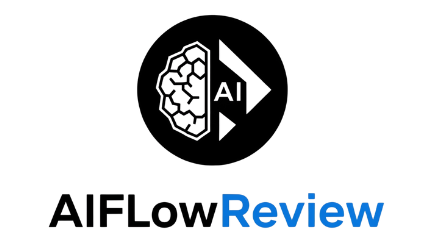AI is everywhere. New tools pop up every week, each promising smarter results or easier workflows. But, as someone who uses these tools daily, I’ve noticed something: not every AI solution lives up to its own hype. If you want real value, you need to know what makes an AI tool “top-rated” and not just another name in a sprawling directory.
Let’s break down the markers that set reliable, respected AI tools apart from the rest—and why they matter.
Core Criteria for Top-Rated AI Tools
 Photo by Matheus Bertelli
Photo by Matheus Bertelli
People in AI circles talk a lot about features, but the best tools share some key traits. Here’s what experts (and most real users) agree matters most:
- Relevance to Task: The tool needs to solve a specific problem and do it well. If an AI writing assistant can’t boost your content’s clarity or tone, it’s just noise.
- Accuracy: Predictions, suggestions, and outputs must match expectations most of the time—not in theory, but in daily use.
- Reliability: Crashes or laggy servers annoy everyone. Top tools must run smoothly and be available when needed.
- Security and Trust: If an AI tool handles sensitive data, it must offer strong privacy controls and align with current regulations, like GDPR.
- User-Friendliness: Even the smartest tool won’t matter if people can’t figure it out. Clear menus, simple onboarding, and helpful docs go a long way.
- Customization: Each business or creator has unique needs. The stars of AI let you tweak settings, adapt templates, and create custom workflows.
- Scalability & Integration: Industry leaders like Google’s Gemini and Synthesia offer easy integration and robust APIs, letting companies plug AI into growing systems without major overhauls.
Taken together, these criteria create a strong base for evaluating any AI solution. For more on common AI evaluation practices, Purdue University’s guide on evaluating AI tools is a great resource.
Proven Performance and Accuracy
Accuracy isn’t just about algorithms. It’s about real, consistent results for real users. The most celebrated AI tools show off their accuracy with clear benchmarks, published test results, and actual user stories. They don’t try to cover up their occasional mistakes—they fix them with regular updates. The best examples today, like ChatGPT for conversation or DALL·E for image generation, are famous for getting better every few months because their teams listen and adapt.
Reliable tools track things like latency (speed of results), error rates, and bias corrections. Many now support multimodal functions, so they handle text, images, and even audio together for better context. If you want to see what performance standards look like for market leaders in 2025, TechRadar’s review of over 70 AI tools gives a sense of the industry’s high bar.
Human Oversight and Customization
No matter how smart an AI is, humans should stay in the loop. The best tools let us review, edit, or reject AI decisions, keeping us in control. This is especially important when the AI generates creative materials like video, music, or ad copy.
Customization isn’t just a nice-to-have, it’s essential. Whether that’s adapting AI avatars for a brand, tweaking the voice and tone in a writing assistant, or setting up custom prompt templates, flexibility means the tool can become an extension of your workflow. A good example is video tools like Synthesia, which let you adjust avatars and language for different audiences—see how Synthesia does this.
Security, Privacy, and Trust
Security and privacy are headline issues. Businesses and creators want to know how their data is handled and who can access it. Top-rated AIs explain:
- What data gets collected.
- How it’s secured (through encryption, permissions, and monitoring).
- Whether user data is used to train future models.
Transparency about these practices makes or breaks trust. The Forbes Tech Council covers this topic well in their article, 10 Considerations When Evaluating An AI Tool.
What Real Reviews and User Evidence Reveal
It’s one thing for a company to claim their AI tool is world-class, but if real users don’t see value, ratings will reveal the truth. Reviews and side-by-side comparisons from reputable directories highlight what’s working in real environments.
Reviews spotlight trends:
- How a tool matches its promises over time.
- If ongoing support resolves new problems as customers scale.
- If analytics and reporting features help users track improvement in metrics like engagement and productivity.
Performance can often be tracked using clear Key Performance Indicators (KPIs) such as engagement rates, user retention, and tangible business outcomes. Tools that improve these numbers gain traction and loyalty fast.
Integration With Existing Workflows
People don’t want to ditch current systems to add new tech. “Top-rated” usually means an AI tool slides into what you already use, supporting platforms ranging from Slack to Shopify or even custom APIs. Smooth integration limits downtime, keeps teams productive, and helps companies scale without constant disruptions.
Many of the most popular options, such as ChatGPT, Notion AI, and automation services like Zapier, are popular specifically because they play nice with dozens of other tools. Zapier’s list of the best AI productivity tools covers some prime examples.
Active Support and User Community
Good support is a dealmaker. Even the sharpest AI can run into edge cases or confusing quirks. That’s where responsive help desks, live chat, or thriving user communities can make all the difference.
Top-rated tools back up their product with FAQs, video walkthroughs, and extensive user forums—or better yet, active moderators and support staff. Tools like Jasper and Notion have built their success on documentation and user-friendly upgrades, as covered in the best generative AI tools guide.
Bringing It All Together: Choose AI That Earns Its Stars
Picking the next big thing in AI isn’t about flash or buzzwords—it’s about finding tools that mix accuracy, security, adaptability, and support with proof from real users. The best options don’t just claim to save time or money—they show it, both in technical benchmarks and in satisfied reviews from people who stake their daily work on reliable results.
When I hunt for new AI tools, I go straight to trusted directories, compare expert reviews, and scan user stories. Platforms like Synthesia’s rundown of AI leaders and transparent review hubs give me the peace of mind to make the right call.
So if you’re searching for your next AI assistant, video creator, or automation partner, don’t settle for big promises. Demand a blend of clear performance, strong security, real user proof, and accessible help. In a fast-changing field, these are the markers that set truly “top-rated” AI solutions apart from the rest.
Read more: What People Ask Us About AI Tools

















